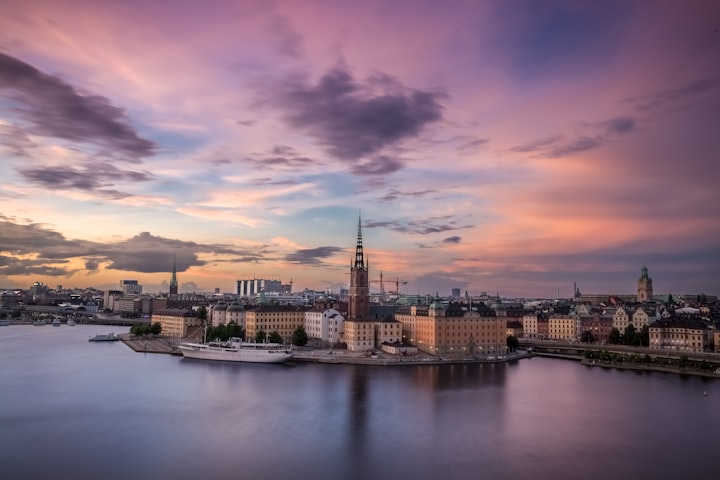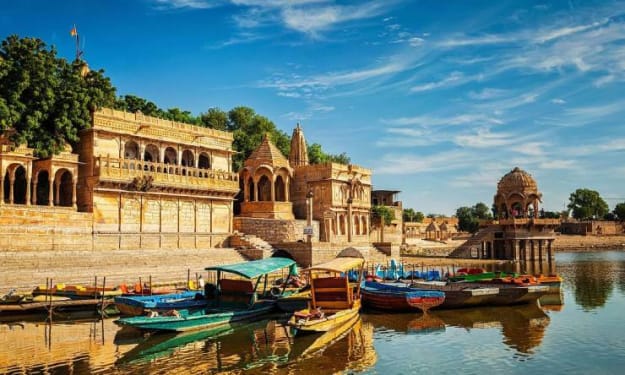Why Are The Nordic Countries Successful?
The Nordic countries consist of the three Scandinavian countries (Sweden, Norway and Denmark), Finland and Iceland.

Wait, doesn't "Scandinavian countries" mean the same thing as "Nordic countries"? Before we start going into the title of this post, it is necessary to clarify this.
It is common to hear the terms "Scandinavian" and "Nordic" as if they were synonymous, but they are not. I'll explain it better:
Scandinavia is a geographical and cultural region in northern Europe. It consists of three countries: Sweden, Norway and Denmark. The latter, although it is located on the opposite coast to this area and belongs to continental Europe, is considered a Scandinavian country due to cultural and linguistic factors.
Did you know that...
The Romans named the area north of Germania as Scania, which was thought to be an island. It was later discovered to be the southern tip of Sweden, also called Skane (Scania)?
All three countries have a common past, having been inhabited by Vikings more than ten centuries ago. In addition, Swedish, Norwegian and Danish are all languages of Germanic origin.
The Nordic countries, on the other hand, is a denomination that was born in France and it was from 1956 that it took strength, with the creation of the Nordic Council, which sought to frame and define the cultural affinity between the five countries.
Iceland and Finland were included because of their geographical proximity and also because of their cultural origin with the Scandinavian countries.
This has been clarified. Let's continue.
Keys to the success of the Nordic countries
Education.

In 2012, Finland was declared the country with the best education system in the world, by The Economist's intelligence department.
This education system was established a little more than 40 years ago and is a departure from the traditional education that is implemented in most countries in the world (it is worth dedicating an article to this alone).
The Finnish educational model does not focus on exams. They only have a standardized test that students must take at the age of 16.
Children start school at age 7. During their first years they are not assessed academically. And one of the most striking things is that their break lasts 75 minutes.
Education is free. Teachers spend four hours a day and are paid by the state for two hours a week of training.
The teaching staff is of high quality and must have a Master's degree to be a teacher.
The cold of the Nordic countries changes the style and habits to which it is accustomed in Latin America or even in the rest of the European continent. So they last longer inside than outside, in the street.
According to some experts, unlike the heat that invites socialization, the cold invites learning and self-perfecting activities to combat depression.
Personal freedoms.

The Nordic countries are deeply egalitarian and respect the freedoms of the individual.
Sweden is known as the country in the world where women's rights are most respected and Denmark was the first country in the world to legalize the union of homosexual couples.
Respect for freedom of expression is reflected in freedom of the press.
By 2017, according to the Reporters Without Borders report, in its annual ranking of 180 countries, the Nordic countries are among the top 10.
Norway ranked first in press freedom.
There is something to note. It is that there is a law (which varies for each country), which basically allows walking and camping on any land that is uncultivated or even cultivated in winter, even if that land belongs commercially to someone.
As long as they act responsibly, don't go within 150 meters of a building, respect the animals and trees and nature in general, you can climb any mountain, swim anywhere, navigate any river, pick wild fruits, ride in any forest and camp on any farm.
Citizens have the right to use the land that constitutes their country.
Sensible economies.

They are not large economies compared to countries more populous than they are, but they do have robust and solid economies. They are strong in relation to GDP per capita.
They are rich countries. Most with natural resources. They know how to specialize in a single product, occupying a specific market niche in the world.
Natural resources and specialization in a single product.
Yes, you might think that many Latin American countries have natural resources. In fact, if you think of Venezuela, oil automatically comes to mind. But, we don't have the industrial development and commercialization models that they have:
- Norway with its oil.
- Finland with its cell phones.
- Sweden with its steel, paper or cars.
- Iceland with its fish industry .
- Denmark with its food and renewable energy industries.
Sweden is in fact the country with the highest number of multinationals per capita in the world.
The small population of the Nordic countries allows their economies to meet the needs of their inhabitants and at the same time, their proximity to European markets (Sweden, Finland and Denmark are members of the EU), allows them to increase the demand for their products beyond the local market.
Social benefits.

The states try to care for and protect education. Education and health services are free and unemployment remains at quite low levels.
The state takes care of the elderly and makes it easier for young people to leave home and become independent if they wish, as soon as they come of age.
Maternity leave is 16 months in Sweden, to be divided between the couple as they wish. Norway was the first country to introduce paternity leave and stipulates that at least 14 weeks must be taken by men.
In Finland, they say that babies sleep in boxes. Sometimes they do. This box is the one the state gives to mothers every time they are about to give birth, full of products essential to the baby's well-being.
It is a tradition that dates back to the 1930s, and it is designed to give all children in Finland, regardless of their origin, an equal start in life.
The result: Finland has one of the lowest infant mortality rates in the world.
Social commitment.

The Nordic countries have become famous for being protective of the environment. They are leaders in the creation and use of renewable energy.
They are committed to recycling, to the point that in Sweden, for example, only 4% of the garbage generated by a household goes to landfill. The rest is recycled or used to make electricity.
At this point, we have to talk about the honesty of the Nordic countries and their low levels of corruption.
The organization Transparency International has developed its famous Corruption Index. Out of 176 countries included in the 2018 study, Denmark appears as the least corrupt country in the world. Sweden is ranked fourth and Norway is the sixth least corrupt country.
Women's contribution to society.

At least since 1995, the Nordic countries have led the way in the top number of countries with the largest number of women in their parliaments. By 2015, curiously enough, they will be competing with some Latin American and African countries such as Rwanda, Bolivia, Cuba or Ecuador.
In the Nordic countries 6 out of 10 women work. In Spanish-speaking countries, the figure is much lower, except in Peru, where the figure is 4 out of 10 women.
Happiness.

Happiness is more than a key to success, it is a consequence of it. The World Happiness Report, published by the UN, for its latest edition (2019), focused especially on classifying the happiness of the immigrant population living there.
The conclusion of the study is that the level of happiness of their populations is almost identical to that of the immigrants residing in this top 10.
In first place and for the second consecutive year, Finland is the happiest country in the world, followed by Denmark and Norway, in second and third position.
Welfare state.

This term is widely used and is apparently the most important key to the success of the Nordic countries.
There are many books that explain what this term means. It is a really fascinating topic for all of us who study society.
Here I will highlight a couple of considerations about the welfare state as a key to the success of the Nordic countries:
The idea of the welfare state was implemented in the Nordic countries after World War II. And I say implemented, because it was generated in the 19th century.
Bismarck's law, health insurance, accident insurance, pension law... all these are social rights that were recognized more than 100 years ago and that would be incorporated into the concept of the Welfare State.
But it was not until after the Second World War, when countries were devastated, that they set out to create a public model that would provide social welfare and quality of life for citizens who at that time lacked everything.
Norway was the first country to implement the social welfare model in 1945.
The model was implemented by a left-wing, social-democratic government. In 20 years it reduced unemployment and poverty. They achieved this by implementing some communist ideas such as price control and banks, but following the model of a capitalist economy.
In 1965, a right-wing, conservative government entered. But it continued with the model of the previous government as it was working.
Since then, right and left governments have passed in Norway and all have respected the model of the Welfare State.
Norway is today one of the richest countries in the world. In 2011, it was ranked as the country with the highest human development index and in 2007, it was ranked as the most peaceful country in the world.
Why are the Nordic countries successful?
And, what does this model of social welfare consist of? The answer is: work, work and work for all. So that everyone can contribute.
That is the basis for creating a strong economic model that works. But for it to work, you have to create value, to have something to distribute. To create value, everyone has to contribute. The taxes that Nordic citizens pay on their income are among the highest in the world.
A cooperative model is built on the economic model. This is nothing more than a compromise between government, employers and trade unions to reach fair wage agreements for all.
The result of this cooperation: the wages of the Nordics are among the highest in the world, and the working hours are the lowest.
The economic and cooperative models are the ones that support the Welfare State, whose objective is to include everyone.
About the Creator
HowToFind .com
More info at https://howtofind.com






Comments
There are no comments for this story
Be the first to respond and start the conversation.